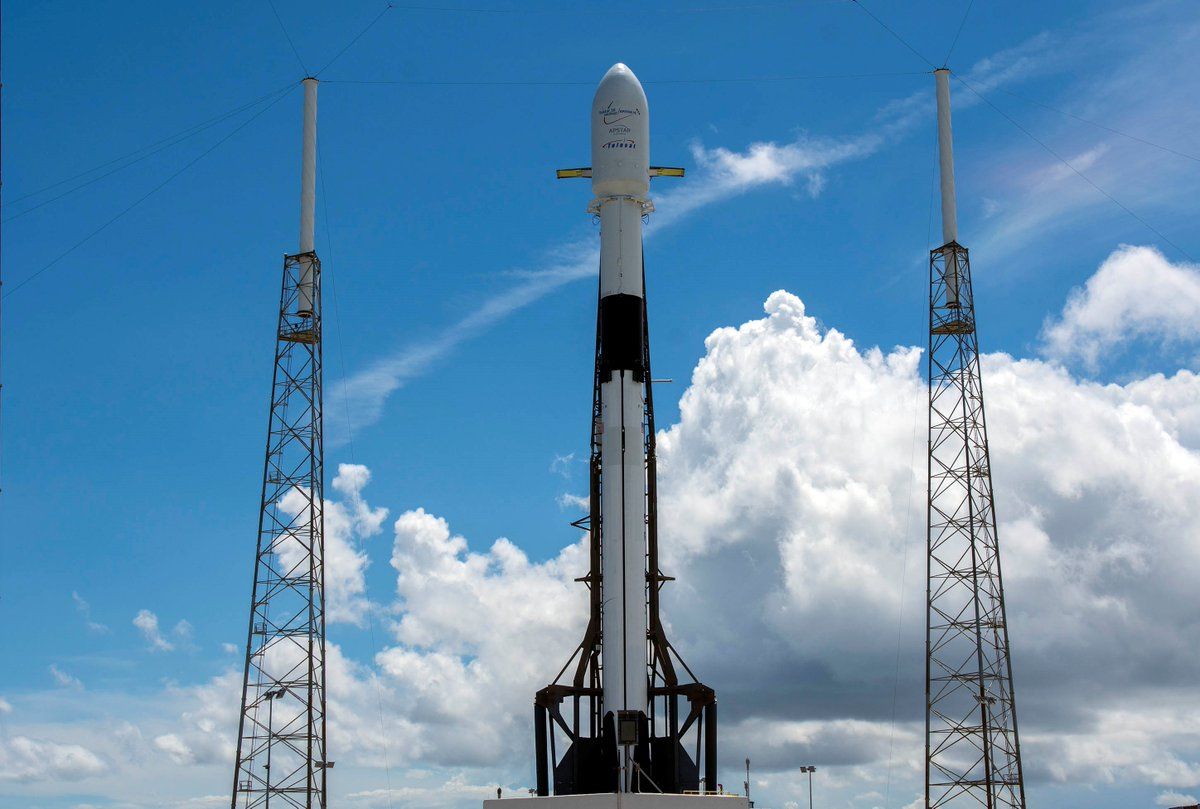A SpaceX rocket will launch a Starlink satellite fleet tonight and you can watch it live. Here’s how.

CAPE CANAVERAL, Fla. — SpaceX will launch its next batch of Starlink satellites on Sunday (Feb. 28) as part of an effort to further expand the company’s satellite-internet fleet, and you can watch the action live online.
The Hawthorne, California-based company is planning to fly one of its Falcon 9 rockets for a record-tying eighth time. The two-stage launcher will blast off from NASA’s historic Pad 39A here at Kennedy Space Center in Florida at 8:37 p.m. EST (0137 March 1 GMT) — if all goes as planned.
You can watch the launch live here and on the Space.com homepage, courtesy of SpaceX, beginning about 15 minutes before liftoff. You can also watch the launch directly via SpaceX.
Related: SpaceX’s Starlink satellite megaconstellation in photos
SpaceX is already off to a rapid start for this year, as Sunday’s launch will be the sixth of the year for the private spaceflight company. The company has leaned heavily on its fleet of flight-proven rockets, and as such was able to get a record 26 off the ground in 2020.
This year the company has even bigger ambitions, as it is planning to launch 40 rockets between its California and Florida launch sites.
One of SpaceX’s two drone ships — “Of Course I Still Love You” — hopes to catch the record-setting booster as it returns to Earth. If successful, the landing will mark the 75th recovery for SpaceX since the company landed its first booster in 2015.
On the company’s last launch on Feb. 15, the booster was unable to land on the drone ship, plopping into the Atlantic instead. Company officials have said that while booster recovery is beneficial, it’s not the main goal of the mission — that’s delivering the payload to space.
This particular flight has been delayed for almost a month due to weather and hardware issues. Named Starlink 17, this flight was leapfrogged by Starlink 18 and 19 as the boosters in those two flights were ready to fly.
B1049 is the booster used in today’s mission and is one of two that has flown more than six times. This flight marks the eighth launch for this booster, and will tie two other Falcon 9 rockets — called B1049 and B1051 — for the most flights to date.
SpaceX has said that with the upgrades it gave Falcon 9 back in 2018 — better thermal protection system, upgraded grid fins, and a more durable interstage — the rocket can hold up better to the stresses of launch. This means it can fly more times with fewer refurbishments in between.
The company also said that it expected each booster to fly a minimum of 10 times with little-to-not refurbishments between flights and as many as 100 times before retirement. We could see that 10th flight happen later this year.
The stack of 60 flat-panel Starlink satellites set for launch Sunday will add to SpaceX’s fleet of more than 1,000 broadband relay satellites already in low Earth orbit. With this newest batch, SpaceX will have placed more than 1,200 Starlink satellites in orbit, including prototypes of the satellites that are no longer in service.
The company has plans of launching thousands more, although it is getting close to filling its initial constellation of 1,440. As such, SpaceX is moving closer to providing commercial internet service with the Starlink network, with a full commercial rollout later this year.
That roll out will come after an extensive beta testing program that included both employees and the public. The “better than nothing“ beta testing program kicked off in 2029 and has already provided thousands of users connectivity.
The company is already taking preorders for the service, allowing a limited number of users per area. If interested, potential customers can sign up via the company’s website.
SpaceX’s dynamic fairing-catching duo, GO Ms Tree and GO Ms Chief will remain in the port for this mission. In their place, SpaceX has deployed two of its other recovery vessels — GO Searcher and GO Navigator — to the planned recovery site.
The two boats, which typically support Dragan missions, are able to scoop the fairing pieces out of the water. There will be no catch attempt, since Ms Chief and Ms Tree are still in Port Canaveral.
Forecasters at the 45th Weather Squadron say that the launch weather looks promising for a Sunday night liftoff, with a 90% chance of favorable weather. The only slight concerns being liftoff winds and cumulus clouds.
If needed, there is a backup attempt on Monday, and the weather will deteriorate slightly to 70%.
Follow Amy Thompson on Twitter @astrogingersnap. Follow us on Twitter @Spacedotcom or Facebook.
